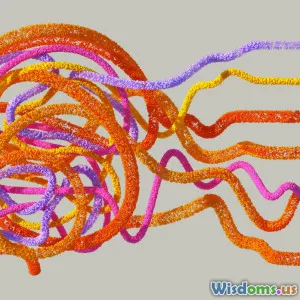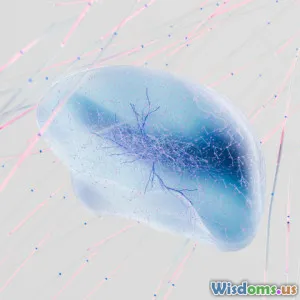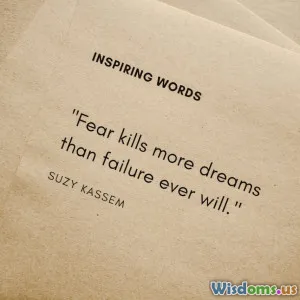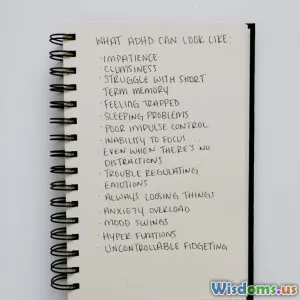
What If Humans Uploaded Consciousness How Close Are We Really
9 min read Explore the science behind consciousness uploading and how close humanity is to achieving mind transfer technology. (0 Reviews)
What If Humans Uploaded Consciousness: How Close Are We Really?
Imagine a future where death isn’t an endpoint but a pause on the brink of digital rebirth. The concept of uploading human consciousness—the transferring of a person's memories, thoughts, and essence into a computer—has captivated scientists and science fiction enthusiasts alike. But how much of this is fantasy, and how much reality? This article delves into the cutting-edge science, challenges, and ethical quandaries surrounding consciousness uploading, and explores where humanity truly stands on this incredible frontier.
Understanding Consciousness: The Foundation of Uploading
Before discussing feasibility, we must clarify what uploading consciousness means. Consciousness encompasses awareness, subjective experience, thoughts, memories, personality, and self-identity. Unlike just digitizing data, uploading consciousness implies transferring the experiential self.
Scientists currently do not fully understand what consciousness is—a “hard problem” as philosopher David Chalmers terms it. The human brain comprises roughly 86 billion neurons interconnected by approximately 100 trillion synapses. The brain's electrochemical dynamics create the emergent phenomenon we perceive as consciousness.
Any attempt at uploading requires capturing and replicating this incredibly complex network. It isn’t merely copying memories or encoding data, but preserving the structure, state, and dynamics that generate consciousness.
Current State of Brain Mapping and Simulation Technologies
Advancements in Connectomics
Connectomics is the study of the brain’s wiring diagram. Projects like the Human Connectome Project have mapped billions of neuronal connections in finer detail using MRI and electron microscopy. There's also the Blue Brain Project aimed at simulating neocortical microcircuits in silicon.
However, even with unprecedented imaging methods, fully mapping the human brain’s intricate 3D network at synapse-level remains a gargantuan task. The smallest known brain map at the synapse resolution is of the roundworm Caenorhabditis elegans with its mere 302 neurons (White et al., 1986), much simpler than the human brain.
Whole Brain Emulation Efforts
Hypothetical whole brain emulation (WBE) involves scanning the brain at a microscopic scale, digitizing its substance, and running it on a computer so that behaviors and thoughts replicate the original. University of Southern California’s Center for Brain Simulation explores this route, but creating a hardware platform capable of such immense computational demand is a challenge—the human brain’s approximate operations exceed 10^16 instructions per second.
Artificial Intelligence and Neural Models
Artificial Neural Networks (ANNs) inspired by brain function, while powerful in machine learning, only loosely mirror human cognition. They do not replicate consciousness but rather pattern recognition and learning processes. Understanding and modeling individual consciousnesses remain far beyond today’s AI capabilities.
Technological Challenges: Why Uploading Is So Hard
-
Resolution and Detail: Scanning millions of neurons and trillions of synapses without distortion is currently impossible for living human brains.
-
Dynamic State Capture: Consciousness depends on dynamic electrochemical brain states, neuromodulators, and biochemical environment, which are lost when tissue is processed.
-
Brain Plasticity: Synaptic connections constantly change; capturing a “snapshot” doesn’t guarantee a stable consciousness replication.
-
Computational Power: Even if digitized, simulating the human brain in real-time demands exascale computing and sophisticated algorithms.
-
Data Storage: Single human brain data could require hundreds of petabytes to store and process.
These barriers mean that technological readiness for full consciousness uploading is, by most estimates, many decades if not centuries away.
Ethical and Philosophical Questions
Even considering technical breakthroughs, the concept raises profound ethical dilemmas:
Identity and Continuity
If you upload your mind into a computer, is the digital version ‘you’? Or just a copy? Does your consciousness transfer, or do you continue to exist only biologically?
Personhood and Rights
Would consciousness uploads possess legal and moral rights? Would they be considered persons, or programs?
Privacy and Security
Storing human minds digitally could lead to risks of hacking, unauthorized manipulation, or existential harm.
Inequality and Access
Will mind uploading be accessible only to wealthy elites, amplifying social divides?
Philosophers like Nick Bostrom have explored many such scenarios, cautioning against uncritical optimism.
Real-World Inspirations and Progress Towards Digital Immortality
While full uploading might be distant, efforts in digital preservation of aspects of consciousness are underway:
-
Neural Prosthetics and Brain-Computer Interfaces: Devices like Elon Musk’s Neuralink aim to interface the brain with computers, expanding cognitive abilities and potentially recording neural patterns.
-
Cognitive Archiving: Some companies and researchers explore capturing personality traits via AI chatbots trained on personal data—far from uploading, but a step towards digital legacy.
-
Cryonics: Although controversial and speculative, cryonic freezing preserves the brain shortly after death with the hope future tech revives the consciousness.
-
Memory Transfer in Animals: Research on transferring memory through RNA in snails raises tantalizing, albeit preliminary, biological possibilities for memory preservation.
How Close Are We Really? Expert Opinions and Timelines
Many neuroscientists and futurists suggest that true uploading is likely a long-term prospect:
-
Derek Gregory, a cognitive scientist, indicates that “a comprehensive understanding and emulation of consciousness may take centuries.”
-
Ray Kurzweil, futurist and AI pioneer, predicts uploading might become possible around the 2040s, driven by exponential technology progress.
-
Anders Sandberg, Oxford philosopher, asserts technical possibility within a century but notes severe societal adaptation challenges.
In short, while AI and neurotechnologies are advancing rapidly, the leap from understanding to full consciousness replication remains monumental.
Conclusion: Between Science Fiction and Scientific Reality
The notion of uploading human consciousness exists at a thrilling intersection between science fiction and emerging scientific inquiry. Although tantalizing concepts permeate books, movies like Transcendence or Black Mirror, and speculative futurism, the reality is complex. Full brain emulation and consciousness transfer are beyond our current technological horizon, constrained by immense scientific unknowns, technical barriers, and ethical concerns.
Yet, incremental advances in brain imaging, AI-driven cognitive modeling, and brain-computer interfaces continue to push boundaries. While we may be decades or centuries away from the dream of digital immortality, the pursuit forces us to reconsider what it means to be human. For now, consciousness uploading remains a glimpse of a possible future—stimulating profound questions about identity, mortality, and the essence of life itself.
References:
- Human Connectome Project, NIH
- Blue Brain Project: bbp.epfl.ch
- White et al. (1986). The structure of the nervous system of the nematode Caenorhabditis elegans.
- Bostrom, N. (2003). Are You Living in a Computer Simulation? Philosophical Quarterly.
- Kurzweil, R. (2005). The Singularity Is Near.
- Sandberg, A. (2014). The Ethics of Brain Emulations.
Step cautiously into tomorrow's realms, guided by science and conscience.
Rate the Post
User Reviews
Popular Posts





















